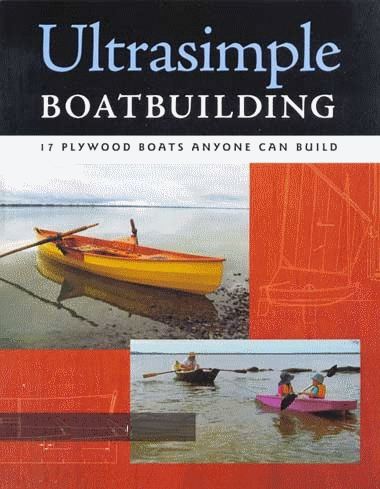 In regard to a couple of articles I wrote recently, Mike sent in this comment. The comment was made in the context of some queries made about ballasting for my Whimbrel design (not yet available, but she promises to be an interesting boat).
In regard to a couple of articles I wrote recently, Mike sent in this comment. The comment was made in the context of some queries made about ballasting for my Whimbrel design (not yet available, but she promises to be an interesting boat). |
| An un-finished drawing of Whimbrel, showing her general proportions. As you can see, she carries leeboards, which have just enough ballast to sink the boards reliably, but are not intended to add significantly to the boats stability. |
Ross - I have often thought that stubby little bilge keels combined with leeboards might be just the ticket. The bilge keels could have through holes or threaded inserts in them. When ultimate stability in heavy weather was called for, a long heavy steel plate could be bolted to each keel. In light weather, etc the steel plates could be left off. And the little bilge keels would more or less allow her to sit level when the tide is out. If designed just right the boat could travel on a flat trailer or a traditional boat trailer. The steel plates could just stay right on the trailer in position to be bolted on or off as needed - no lifting or grunting required.
I am not any sort of designer or engineer but I have often thought that this sort of arrangement would offer lots of flexibility and simplicity and be budget friendly.
Feel free to shoot holes in my thoughts - I am just always dreaming of my ultimate boat on a budget.
Thanks Ross!
Mike
I read Mikes comment with interest, but my thoughts were limited by a prejudice Ive long held against bilge keels. My understanding of the behaviour of bilge keels had been based purely on the comments of others, without any personal experience on my part. Not a good way to form opinions!
| Picture of a typical bilge keeler, taken from a sales brochure on the web |
 |
| A boat we built, running just over displacement speed - note the hollow in the waterline. |
Now, I had accepted this theory without any significant thought, and I was going to write back to Mike with such an answer. However, to illustrate my thoughts, I decided to do a flow analysis on the computer using DELFTship Professional software with Whimbrel as the example. The flow prediction facility in DELFTship Professional is a much simplified system than that used in CFD (computational fluid dynamics), but the results are said to be remarkably similar to those gained from CFD, and in this case we only need to get an impression of flow.
 |
| A perspective view of Whimbrel showing the predicted flowlines |
Here is a link to an article from Bray Yacht Design and Research in Canada about the advantages of bilge keels http://www.brayyachtdesign.bc.ca/article_twinkeels.html
If anybody has more information on this subject, I am very keen to learn! In the meantime, Ill just wipe egg off my face....


0 komentar:
Posting Komentar